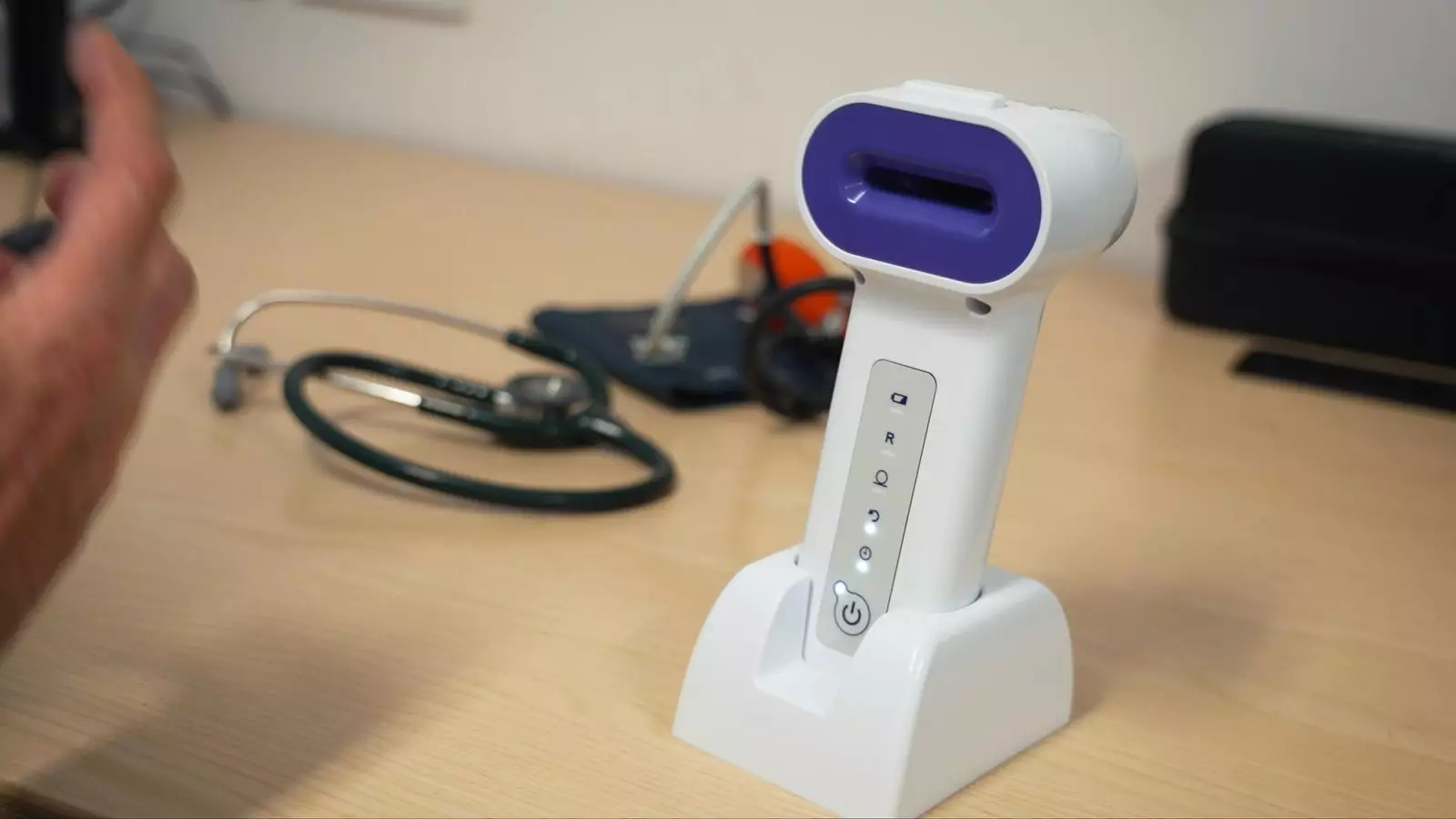Chronic Obstructive Pulmonary Disease (COPD) is a silent killer that affects nearly 3 million people in the UK. It’s alarming to acknowledge that two-thirds of these individuals don’t even realize they have this debilitating condition until it’s too late. This is particularly distressing because COPD is the second leading cause of emergency hospital admissions in the UK. The bureaucratic quagmire surrounding traditional diagnosis methods makes it even more frustrating for patients. Typically, diagnosing COPD requires a spirometry test, a grueling procedure that can be time-consuming and demanding for individuals already struggling to breathe. The healthcare system, with its reliance on antiquated testing methods, does a disservice to the very people it aims to help, leaving them vulnerable while they languish in the waiting game.
AI: The Game-Changer in COPD Diagnosis
Enter the N-Tidal Diagnose, a handheld device set to revolutionize this archaic process. This technological marvel could redefine how we identify COPD, allowing diagnoses to be made in as little as five minutes. Dr. Simon Rudland aptly points out the shortcomings of spirometry as it currently stands: it requires specialized training, a physical hub for the procedure, and can leave patients subjected to long waits. The introduction of AI into this scenario could turn the tide in favor of rapid, accessible healthcare. With the ability to diagnose potential COPD based on simple breath analysis, this is not just a step forward; it’s a leap into an era where technology can bridge the vast chasms in our health system.
Breaking Down Barriers
The significance of such technology cannot be overstated. Colin Best, a 67-year-old patient from Suffolk, illustrates the deep emotional and physical toll that delays in diagnosis can take. With his years-long journey filled with exhausted visits to the doctor and multiple spirometry tests until he finally received a diagnosis, it’s clear that the healthcare system’s current framework is frustratingly inadequate. The notion that a simple, five-minute test could bypass such obstacles seems almost too good to be true. However, the data supports it. The N-Tidal Diagnose analyzes carbon dioxide levels in real time, sending valuable information to a cloud platform for immediate AI analysis.
A Paradigm Shift: Potential Benefits and Risks
The innovative approach has broader implications beyond just convenience. Timelines for treatment can be significantly shortened. Enabling patients to begin receiving treatment sooner can improve their long-term quality of life, contributing significantly to healthcare costs. Harvesting insights from a dataset of over 2.5 million patient breaths means that not only is the technology cutting-edge, but it is also rooted in rigorous clinical data. Dr. Ameera Patel, CEO of TidalSense, symbolizes the pioneering spirit of modern medicine, ensuring AI differentiates between COPD and other respiratory ailments. Yet, with rapid advancements come the inevitable risks that cannot be ignored. As we place greater reliance on AI, questions arise: What happens when the technology faces limitations? Can it truly replace the nuanced understanding of a human physician?
The Future of Healthcare: Opportunities and Accountability
N-Tidal Diagnose has received approval across the EU and is poised to invade medical offices shortly. While this innovation presents a reprieve for a cash-strapped NHS, it demands accountability in its deployment. Staff training is minimal – just ten minutes – but how can we ensure that patients receive adequate care, and what frameworks are in place to safeguard against misdiagnoses? This brings us back to the essence of healthcare as a human-centered practice, still requiring empathy, understanding, and the informed judgment only a trained professional can provide.
Embracing innovations like AI in medicine is essential in moving toward a more efficient and effective healthcare system. However, moving rapidly also carries the weight of responsibility. As we tread this path toward technological advancements, let us never forget the need for compassion, an understanding of patient narratives, and, most importantly, the human touch that has historically been the backbone of healthcare. The integration of tools like the N-Tidal Diagnose must always remain in service of not only improving outcomes but also enhancing the patient experience as they navigate their health challenges.


Leave a Reply